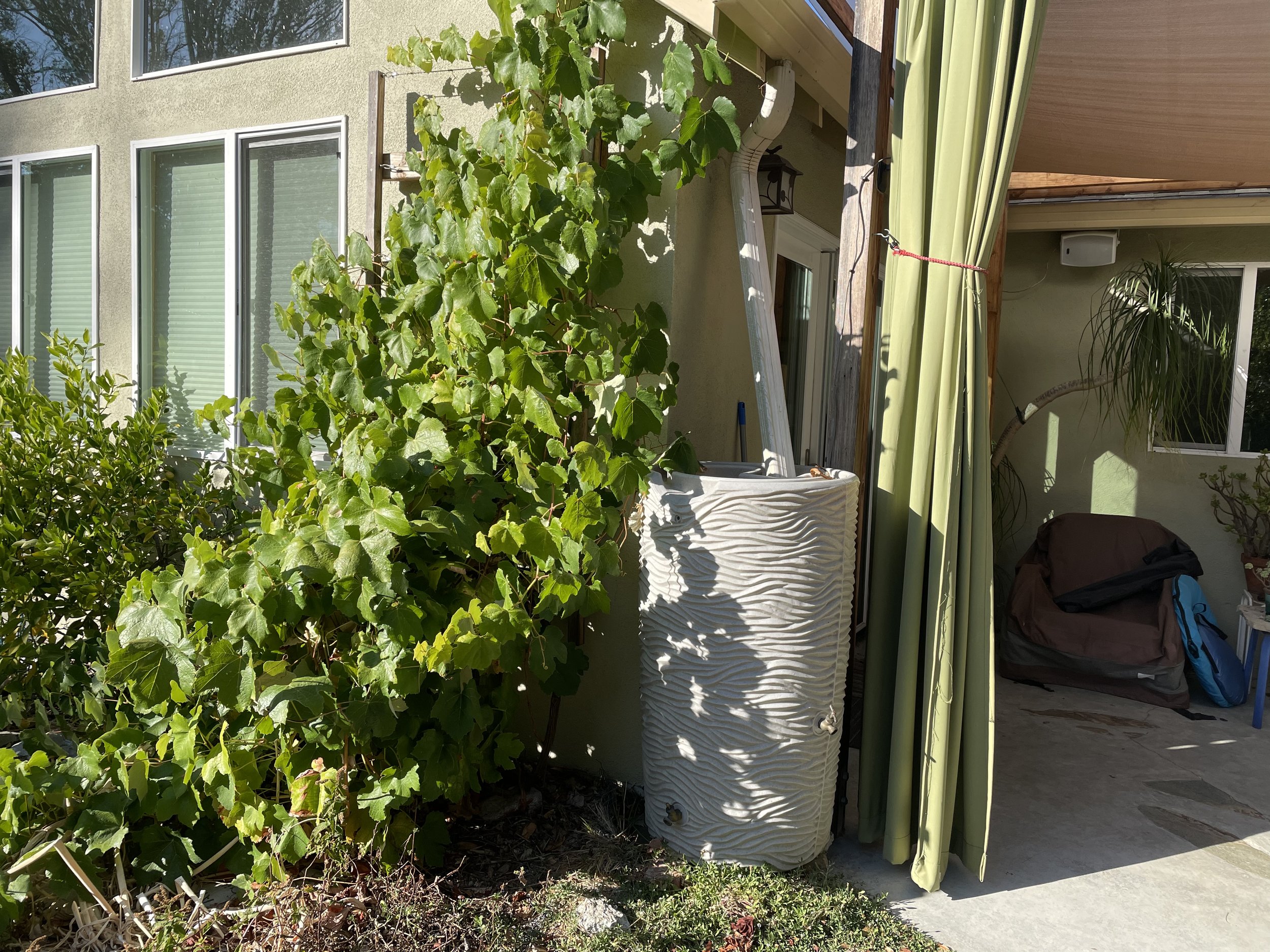Most houses try to divert water from gutters into the street as quickly as possible, which then goes into storm drains and in our area, eventually into the Bay. What if we thought about our watersheds as a water capture system. Your house can be part of an effective water capture system returning thousands of gallons of water to the local environment.
Let’s Rethink Rain Barrels:
Typical use of rain barrels is to store rain to be used later.
House roof area - 1000 sq ft - most single story houses will be twice that.
1” of rain = 625 gallons of water.
Average rain barrel - 50-65 gallons so you could refill one barrel 10 times with 1” of rain.
A low annual rainfall, 10” = 6500 gallons. Average rainfall, 20” = 13,000
The most efficient way to store thousands of gallons of water is in the ground.
My rain barrel method:
Divert gutter downspouts into 65 gal rain barrels. When the rains come, I attach a garden hose to one of the spigots on the barrel and run the end of the hose into the yard, preferably an area with mature shrubs and trees. Especially good if you can heavily mulch the ground. From time to time, I move the end of the hose to different areas. Even if all you can do is move the the end of the hose a short ways from the house and into the ground, it will have plenty of benefit. At the end of the rainy season, I close the spigot on the barrel to store some water for the dry season. Rain barrels are designed to have a spill over area. In a heavy rain storm, you might get water overflowing the barrel because the hose can't divert it fast enough. That doesn’t happen often in my experience..
That water not only can soak deeper into the ground and send roots deeper, thereby protecting them from the hot, dry surface in the summer. An inch of rain falling on the ground only goes about 1” deep into the ground. With enough water, it will slowly seep deeper into the land, hydrating and nourishing all the living soil organisms which will in turn store more water in your soil.
Basic permaculture principle regarding water - slow it, spread it, sink it. Capturing it in rain barrels (slowing) long enough to divert it to the land (spread it) where it can slowly sink. If enough water is sent back to the land, we could begin to refill our water table. It will also return to creeks and rivers more slowly and over time so more water stays on the land, supporting a steady habitat for wildlife! Water is life - capture more life for our yards, our communities, our planet. A virtuous cycle!





